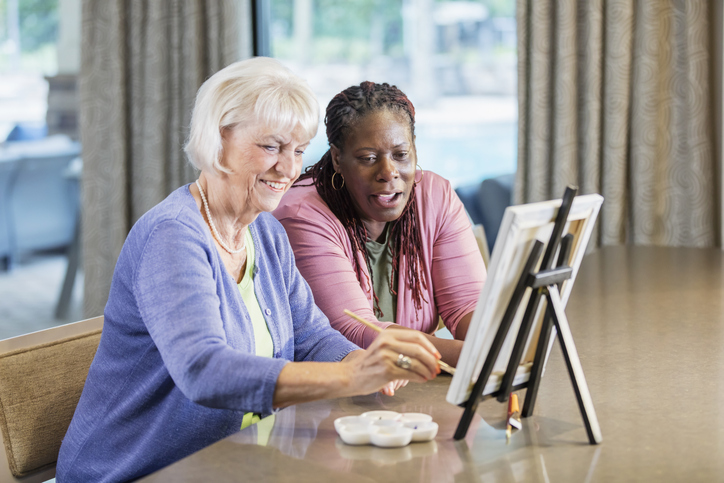
Use these sensory activities to help decrease dementia anxiety and agitation in senior loved ones.
Swift changes in moods are hallmark signs of dementia, and can be challenging for family caregivers to handle. One minute you might be taking part in a nice activity together, when apparently out of nowhere, the person’s countenance shifts. With dementia anxiety and agitation, family caregivers may end up walking on eggshells while carefully attempting to resolve a situation not fully understood.
While it’s useful to identify the primary cause behind intense emotions such as anxiety, agitation, and fear, unfortunately, it’s not always achievable. There might be a known trigger, such as boredom or hunger, that can be easily rectified; but there could be more arbitrary sources, such as the older adult remembering an upsetting memory from many years ago they are unable to talk about. To help manage dementia anxiety and agitation, sensory activities can help.
What Do I Do Now?
After determining that the senior isn’t in pain or physical discomfort, there are two vital actions to take:
- Journaling: Keep a notebook close at hand while taking care of your loved one. Make note of the date, time of day, and any other particulars regarding an incident of agitation. For instance, note if the senior had just woken up, had just finished eating dinner, had not used the bathroom for a few hours, was watching the news on television, etc. The time of day is particularly important to write down, as older adults with dementia frequently suffer from more anxiety in the late afternoon and evening. Journaling helps family caregivers identify patterns and commonalities to help avoid future occurrences.
- Distraction/Redirection: After acknowledging the feelings the senior is having, it’s often effective to move into a different part of the home (or to go outside if the weather is nice enough) and change the focus to something pleasurable. If it’s been a while since breakfast, a mid-morning snack on the front porch may help. If the senior is wandering or pacing, try going out for a walk around the block or to the park. Sometimes, listening to favorite music can provide feelings of calm. Try a variety of strategies and document the outcomes in your journal for future reference.
Engaging the Senses
Sensory exercises can help preempt or create distraction from dementia anxiety and agitation as well as other challenging mood changes. Try creating and implementing some of the following ideas from our experienced experts in senior home care in Creve Coeur, MO and the nearby areas:
- Scented Cards: Cut pieces of cardboard and attach fragrant objects in small zip-locked plastic baggies to one end. Use a variety of scents that bring to mind memories or a sense of peace: chocolate, cinnamon, peppermint, vanilla, suntan lotion, coffee, etc. Use your imagination and discuss each scent while enjoying them together.
- Aquarium Bag: Fill a big zip-locked plastic bag with water beads and a number of small plastic marine animals, plants, etc. Utilize this idea as a jumping-off point to other sensory bags with different themes based on the senior’s specific interests.
- Homemade Paint: Prepare a batch of this safe, nontoxic paint to keep easily accessible, that can be used for either finger painting or brush painting. Blend together ½ c cornstarch and 2¾ c cold water in a pot. Cook and stir over medium heat until it boils. Stir 1 envelope of unflavored gelatin into ½ c of cold water and add to the cornstarch and water. Allow the mixture to cool, and then divide into different containers, adding different colors of food coloring to each.
Want More Ideas?
At Compassionate Nursing Services, a trusted provider of senior home care in Creve Coeur, MO and the surrounding areas, our dementia care professionals are full of creative ideas such as these, as well as the skill to help effectively manage even the most challenging symptoms of the disease. Our goal is always to make life the very best it can be when it comes to people we serve, every day. Reach out to us at 314-432-4312 for more information.
